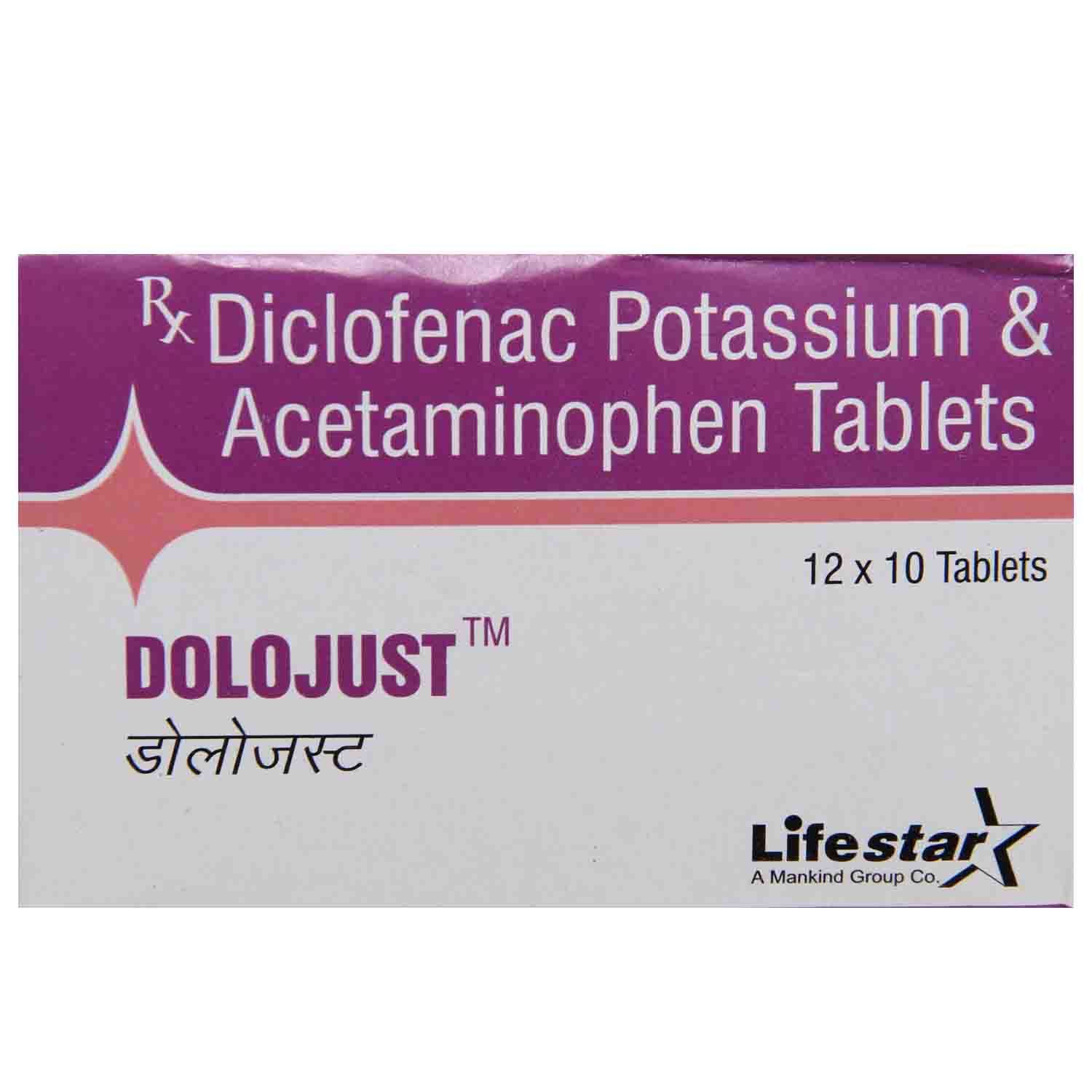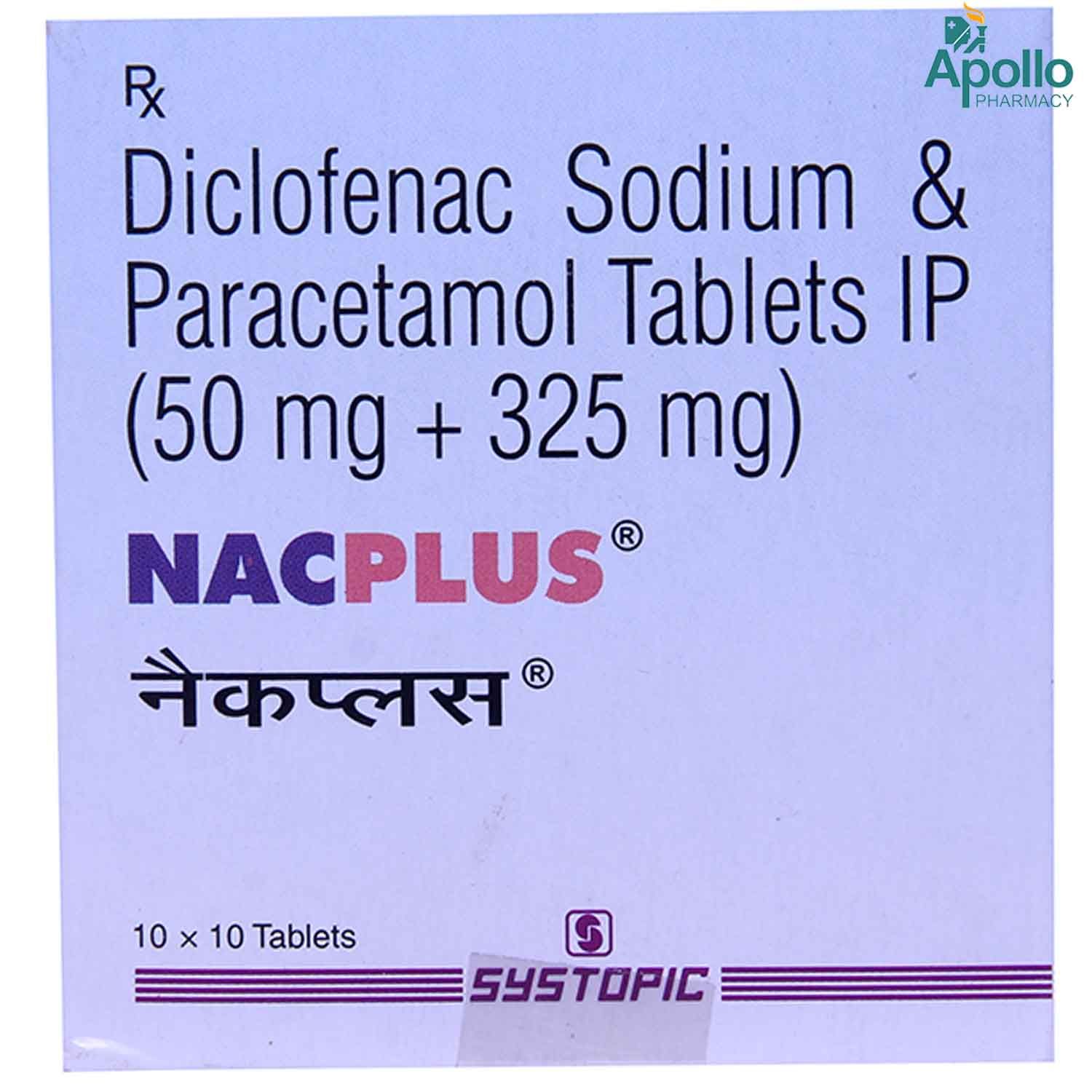DICLOFENAC+ACETAMINOPHEN
About DICLOFENAC+ACETAMINOPHEN
DICLOFENAC+ACETAMINOPHEN belongs to a class of medications known as a non-steroidal anti-inflammatory drug (NSAID) or pain killer. DICLOFENAC+ACETAMINOPHEN is primarily indicated for relieving pain associated with bones and muscles like osteoarthritis (joints pain), sprains and strains of muscles, rheumatoid arthritis (pain, swelling, and stiffness of joints) and ankylosing spondylitis (inflammation of the spine). This medicine also provides relief in pain associated with back pain, toothache, rheumatoid arthritis, painful menses, mild migraine, etc. Pain is an uncomfortable feeling in the body that can range from annoying to severe.
DICLOFENAC+ACETAMINOPHEN contains Diclofenac (analgesic) and Acetaminophen (fever reducer/mild analgesic) effective against painful musculoskeletal pain, joint pain, and skeletal muscle spasms. Diclofenac works by blocking the action of a chemical messenger known as cyclo-oxygenase (COX) which causes pain and swelling at the injured or damaged tissue site. On the other hand, Acetaminophen acts as a mild analgesic (mild pain reducer) and antipyretic (fever reducer), which enhances the pain relief action of Diclofenac. Both medicines in combination work well to provide relief pain in different conditions.
Take DICLOFENAC+ACETAMINOPHEN as prescribed by your doctor. You are advised to take DICLOFENAC+ACETAMINOPHEN for as long as your doctor has prescribed it for you depending on your medical condition. Like all medicines, DICLOFENAC+ACETAMINOPHEN may cause common side effects like stomach upset, dizziness, light-headedness, malaise, nausea, vomiting and liver dysfunction (hepatitis), pruritis (itchy skin), rash, although not everybody gets them. Stop taking this medicine if you experience symptoms like the tightness of the chest, breathing difficulties, fever, skin rashes, increased heart rate and or in case of any signs of hypersensitivity.
Do not take DICLOFENAC+ACETAMINOPHEN if you are allergic to painkillers like aspirin, acetaminophen, naproxen or diclofenac. It is not recommended for use in children less than 14 years of age, people with liver disease, heart disease or gastric ulcers/bleeding problems. DICLOFENAC+ACETAMINOPHEN may be associated with a small increase in the risk of heart attack (myocardial infarction). Pregnant women should not take this medicine during their last trimester of pregnancy. DICLOFENAC+ACETAMINOPHEN is excreted in the breast milk so the nursing mother should contact the doctor before its usage. Avoid consumption of alcohol as it may damage your liver and cause even more side effects from taking this drug.
Uses of DICLOFENAC+ACETAMINOPHEN
Medicinal Benefits
DICLOFENAC+ACETAMINOPHEN is a combination medicine used to relieve pain and inflammation associated with osteoarthritis, rheumatoid arthritis, ankylosing spondylitis, muscle pain, tooth pain, bone and joint pain, headache, swelling, period pain, ear pain, migraine, fever, sore throat, nose pain, etc. By reducing the pain, DICLOFENAC+ACETAMINOPHEN helps you to do normal daily activities of the day. Diclofenac present in DICLOFENAC+ACETAMINOPHEN works by reducing the chemical messenger that is responsible for pain and inflammation in the body. While Acetaminophen works by blocking chemical messenger that sends pain signals to the brain. This medicine also reduces fever by regulating body temperature. Both medicines in combination increase the pain threshold and blood flow across the skin and provide relief in various painful conditions.
Directions for Use
Storage
Side Effects of DICLOFENAC+ACETAMINOPHEN
- Nausea
- Vomiting
- Stomach pain
- Diarrhoea
- Indigestion
- Headache
Patients Concern
Disease/Condition Glossary
Pain: Pain is a symptom triggered by the nervous system, causing uncomfortable sensations in the body. Pain may be dull or sharp, it might be constant or may come and go. The tolerance level of pain might vary from person to person. Pain can be generalized (overall body aches) or localized (affecting a specific area of the body). Pain can be considered a good thing as it helps us know that something is wrong in the body and thereby helps diagnose the condition. The common causes of pain include headache, muscle strain, cramps, cuts, bone fractures, and arthritis.
Osteoarthritis: It is a joint disease in which the two ends of the joints come together due to the breakdown of a protective covering of cartilage. Due to the absence of this protective covering, the joints rub against each other, leading to pain and stiffness. Symptoms include pain, stiffness, inflammation, and tenderness.
Rheumatoid arthritis: It is an auto-immune disease (the body's immune system attacks its tissue), leading to joint pain and damage. Symptoms of rheumatoid arthritis include pain, swelling, stiffness, deformities, and loss of joint function.
Ankylosing spondylitis: It causes pain and stiffness in the spine. The pain generally starts in the lower back and can spread to the neck, damaged joints, or other body parts. Ankylosing spondylitis includes decreased flexibility which usually leads to hunched-forward posture, pain, and back, and joints.
Migraine: A headache of varying intensity, often accompanied by nausea and sensitivity to light and sound.
FAQs
DICLOFENAC+ACETAMINOPHEN should not be taken as a long term medication as it may lead to stomach ulcers/bleeding and kidney problems. For best results of DICLOFENAC+ACETAMINOPHEN, take it in doses and duration mentioned by your doctor.
DICLOFENAC+ACETAMINOPHEN is not indicated for stomach pain. Also, If you have stomach pain post-ingestion it may be a sign of stomach ulcer or gastric bleeding. Do not take DICLOFENAC+ACETAMINOPHEN in this condition. It is better to inform your doctor in case of stomach pain.
It is advised not to take DICLOFENAC+ACETAMINOPHEN until prescribed by your doctor.
Yes, DICLOFENAC+ACETAMINOPHEN is a short term medication and if you feel better you can stop taking DICLOFENAC+ACETAMINOPHEN, but only after consulting your doctor.
DICLOFENAC+ACETAMINOPHEN is a combination of two drugs, namely: Diclofenac, and Acetaminophen. Diclofenac and Acetaminophen work by blocking the effect of a chemical messenger known as cyclo-oxygenase (COX) enzymes that make another chemical prostaglandin (PG). By blocking the COX enzyme's effect, lesser PGs are produced, which reduces mild to moderate pain, fever and inflammation at the injured or damaged site.
DICLOFENAC+ACETAMINOPHEN is used to reduce and relieve pain and inflammation associated with osteoarthritis, rheumatoid arthritis and ankylosing spondylitis. Arthritis is the tenderness and swelling in the joints.
DICLOFENAC+ACETAMINOPHEN should not be taken for longer durations unless prescribed by the doctor. If DICLOFENAC+ACETAMINOPHEN has been prescribed for longer durations, regular monitoring of kidney function, liver function and blood count is advised, particularly in elderly patients.
Diarrhea might be a side-effect of DICLOFENAC+ACETAMINOPHEN. Drink enough fluids and eat fiber rich food if you experience diarrhea. If you find blood in stools (tarry stools) or if you experience excess diarrhea consult your doctor. Do not take anti-diarrheal medicine on your own.
No, DICLOFENAC+ACETAMINOPHEN is not used to treat migraine, it is used to decrease pain caused by mild migraine.


